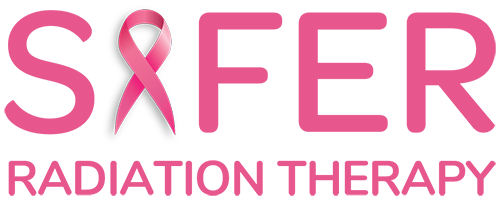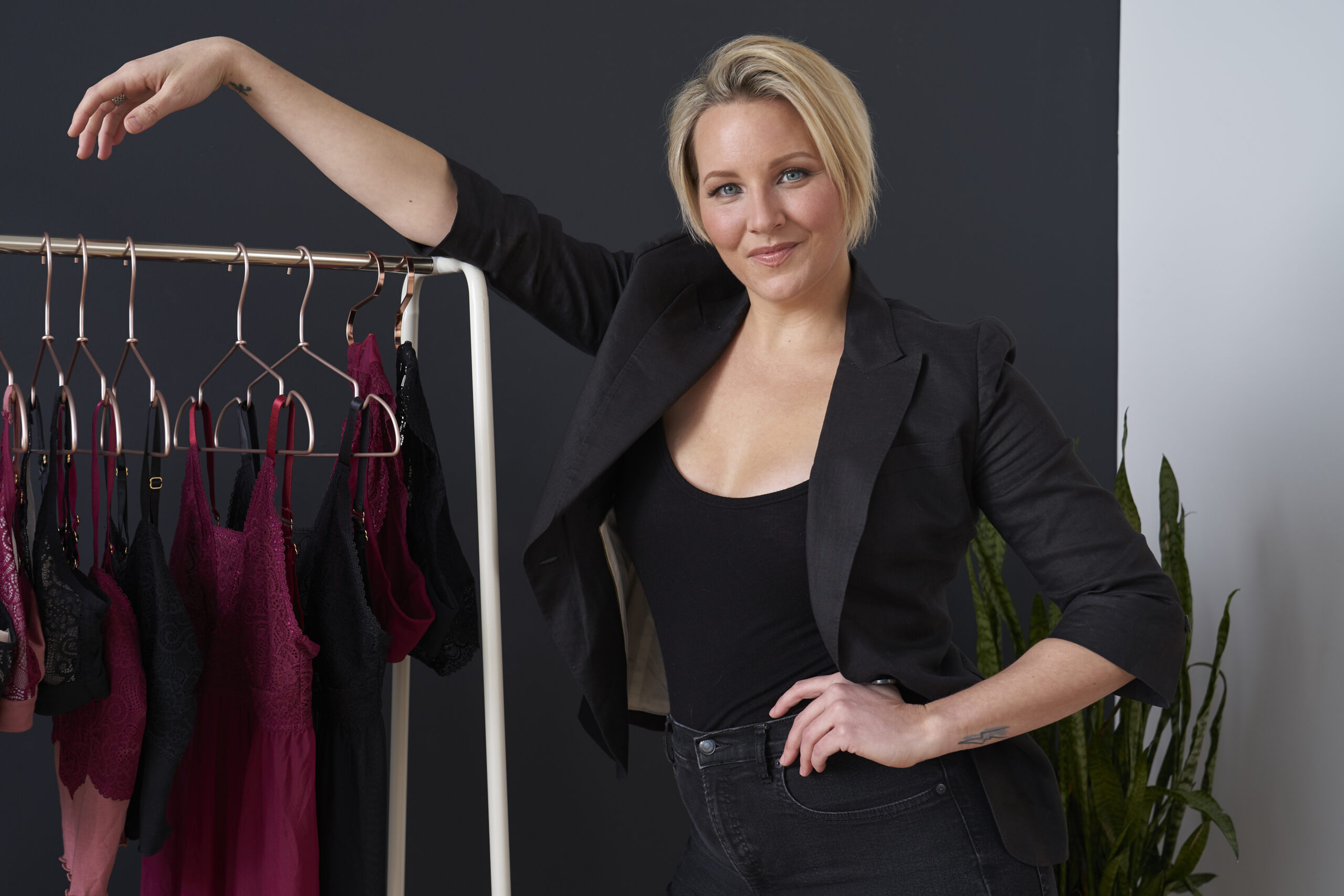
Dana Donofree was a young fashion designer with the world on a string when suddenly she was diagnosed with breast cancer. She soon realized that, while there is support for women in terms of treatment when it came to discussing very real concerns like body image, intimacy, representation and even finding comfortable lingerie that made her feel good, there was a serious gap in the market. She decided to change that. Read on for our insightful and inspiring one-to-one with the dynamic founder of AnaOno.
At the age of 27, you were working in high fashion, newly engaged, and enjoying your life. Then, suddenly, you were diagnosed with breast cancer. What was this like for you?
Getting diagnosed with breast cancer was a complete shock! I didn’t have a strong family history, although my mother’s sister had breast cancer in her 30’s, no one else in our family line had been affected by breast cancer. Monthly breast exams weren’t even on my radar. I was 27. “Breast cancer doesn’t happen to young women” was all I could think of, plus every medical professional I met with leading up to my diagnosis, exclaimed as to how young I was, and how it was likely “nothing.” I was wrong. They were wrong.
What inspired you to create AnaOno?
After I recovered from my bilateral mastectomy with reconstruction, I realized my body wasn’t just changed for a moment in time; it was changed for a lifetime. I kept holding on to the fact that my last surgery would lead me back to my normal life, the one before the mastectomy. After discovering underwire bras were painful and ill-fitting, and the materials were affecting my sensitive skin and scar tissue, I yearned for something better. I spent hours, even days, searching for the right bra, and constantly came up empty-handed. I knew we needed something better, and I had the skills and experience to do something about it. I started designing some of my first bras just to fit me, I figured I would make them on-order through a shop on Etsy, just in case there were other women like me facing the same challenges. Everything on the market was ill-fitting and boring. I wanted to improve the lives of others affected by breast cancer and for me, this was a way I could have that impact. So, AnaOno was born.
You have spoken about your commitment to a patient-first ethos which includes combining cutting-edge technology with education and empowerment. Tell us more about what drives you in this capacity.
In 2010, when I was diagnosed with breast cancer, many conversations were being swept under the rug. From body image and confidence following a mastectomy and cancer treatment to sexual dysfunction and intimacy to young women with breast cancer and even Stage IV metastatic disease. These were all daily topics at AnaOno, but I realized, no one else was talking about them. These are difficult conversations to have, but we need to have them. We need to talk about these trials and tribulations to improve the whole person. This means not just improving her comfort after surgery, but improving her overall well-being.
In your mission, you state “It’s not just about your body– it’s about your story.” What does this mean to you?
As an identifying woman, I realized it wasn’t about my breasts, it was about what I thought feeling like a woman is and was. Before my cancer, in my mid-20’s, I felt like everything was about “how I looked”, not how I felt. I wanted to be fit. I wanted to be desired, to feel sexy. I wanted to be confident. After breast cancer stripped everything away from me that I used to empower myself in those ways, from my hair, my eyebrows, my eyelashes, and my breasts, I had to dig deeper. I slowly realized, after putting all those pieces back together, the physical meant nothing to me. It was how I felt on the inside, and in some ways, those were the parts that were the most broken. I had to start on the inside to feel good on the outside, even if I had to start from scratch. That is my story.
Aligned with your commitment to authenticity, all of the models in your fashion shows and on your site are actual breast cancer patients. What inspired you to make this decision and what has been the customer feedback?
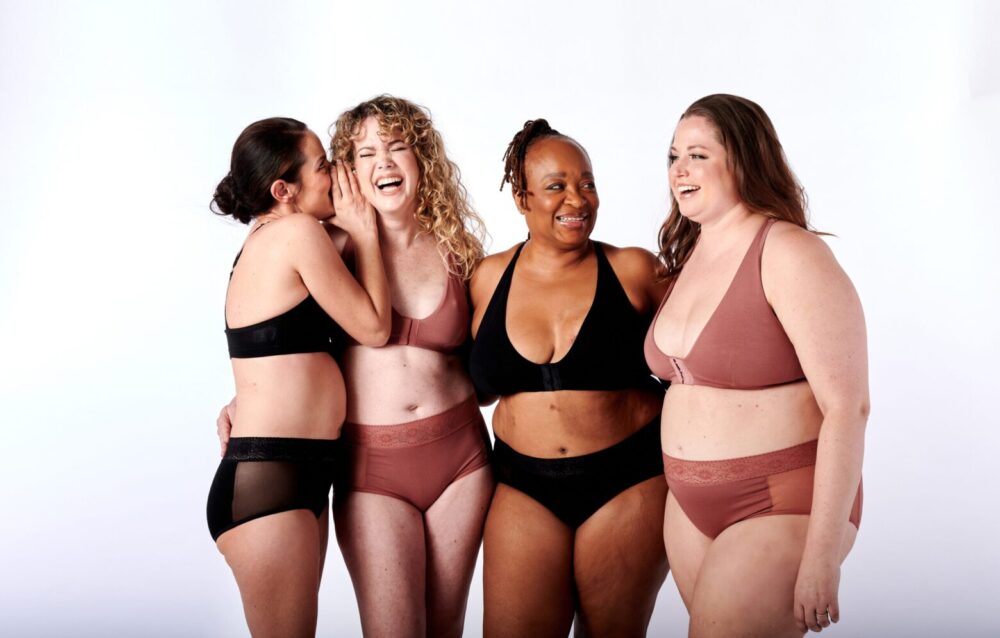
To me, including our community, was never even a question or a thought. It was just what I knew needed to be done. When I was shopping for a “mastectomy bra” I was on websites and in stores seeing these awful bras modeled on beautiful smiling, healthy women, with healthy bodies, and healthy breasts. I thought this was such a slap in the face. I no longer had breasts. Why would you show me that everything is normal when it isn’t? I knew right out the gate that if I was going to show bras that fit those with one breast, two breasts, no breasts, or new breasts, I needed to represent exactly that. Not many models have these body types, so asking my community to be vulnerable with me was scary, but I am so grateful enough of them said yes! Seeing your body type represented can make such an impact when shopping, so I knew it needed to be done.
There seems to be something for everyone on the site with designs ranging from casually chic day-to-day pieces to intricate lace lingerie sets. While different, there seems to be a running theme of femininity in the designs which could have a positive effect on mental health for some women. Was this purposeful?
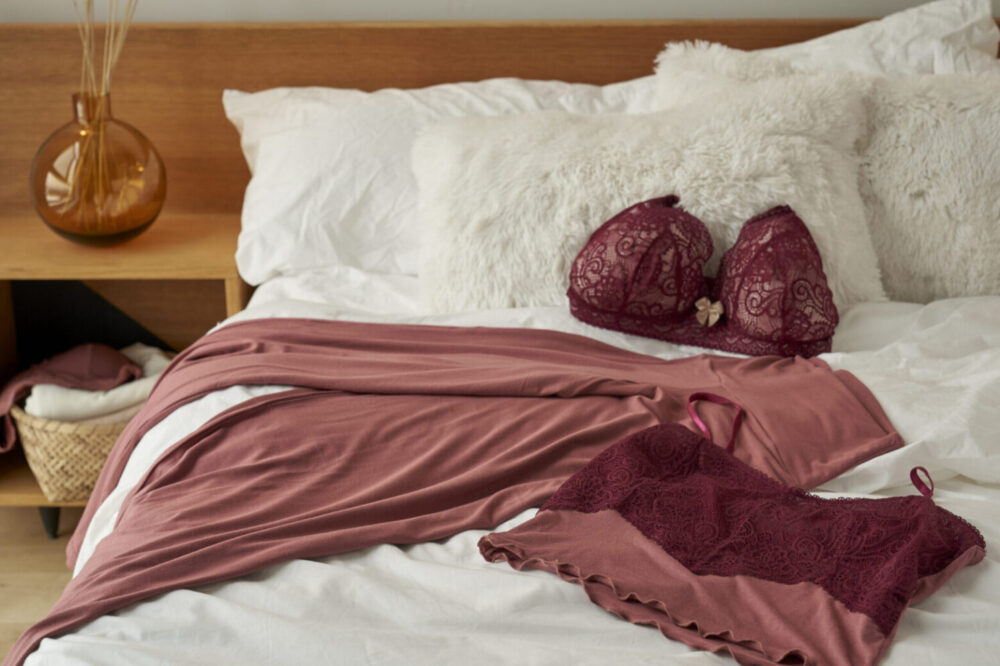
I learned very early on that AnaOno was going to be more than a bra, and this is all part of it. It was the little things I missed in my life. When I was wearing a camisole or sports bra every day, I didn’t feel sexy. I wanted feminine details, even if it was going to be about post-surgery recovery. Just because I was losing my breasts, didn’t mean I was losing who I was as a person. If I had access to it before cancer, I wanted to make sure we included that solution in our collection, because you should have access to it after cancer. Having breast cancer doesn’t make you less of a woman, and we want to celebrate and empower just that!
You mentioned that many lumpectomy patients aren’t aware of the side effects of radiation treatment. Can you expand on this and can you share how your line of radiation bras can benefit these patients?
At AnaOno, we have many patients that reach out to us years beyond their radiation therapy. They could have long-lasting effects on their skin that leave them more sensitive than others, the scar tissue from original incisions can be problematic if not cared for appropriately, and lastly, if radiation effects cause shrinkage beyond the treatment room, some of our customers have size differences from breast to breast from ½ a cup size up to a full to two cup size differences. Many come to us expressing that they were not aware that their breasts could shrink over time, we find them wanting to achieve symmetry or just simply find a bra that fits each unique side differently, and that is where we can support them best. If newly diagnosed and heading into therapy, our modal material is the softest of the softest, it’s also breathable, naturally antimicrobial, and naturally wicking. These are all important features to keep the skin protected and remain as comfortable during the treatment itself.
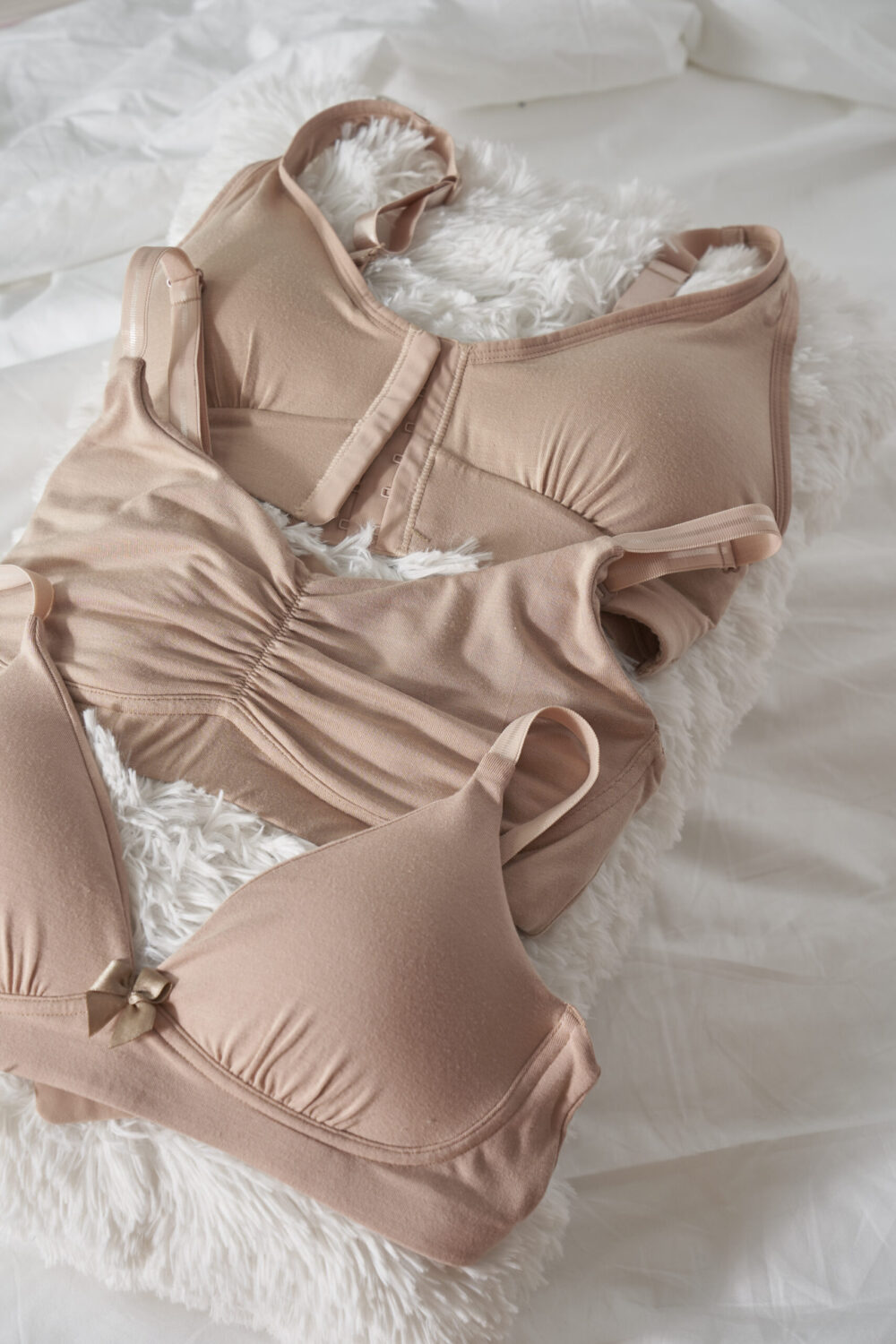
Helping patients build a positive body image and renewed self-confidence are key objectives of your company and product line. Can speak to your experience with radiation tattoos, what they are and how they potentially impact both of these for many patients?
Any mark left from surgery and treatment is often a reminder of what patients have been through. It could be the lymph dissection scar, the mastectomy or lumpectomy incision, the tattoo from the radiation therapy, or the scar from the port. Depending on the patient’s personal feelings, some are proud of these battle wounds, while others never want to see them again. We have to respect and identify both. If there is an option to have tattoo-free radiation, this a positive impact on overall body image and one less “reminder” permanently on your body. This is a huge win for many!
What advice would you give to a patient preparing for radiation treatment?
My advice would be to prepare in advance if possible. We find from our customer feedback that many patients are not prepared in advance with creams, garments, or other treatment hacks, and if the side effects do become present, they feel lost. If you start your creams early, you may have fewer skin issues, and even though you may never know if the creams did it or not, it is well worth avoiding the harsh side effects if avoidable or maintainable before treatments ever start. The same goes for a bra. Why subject yourself to unnecessary pain if you can maintain some level of comfort throughout? It’s important to us at AnaOno that our bra solutions expand beyond just the treatment room and isn’t a disposable option for just a moment, which is why our bras are designed to be worn well beyond the treatment.
You have said that you didn’t want to disrupt mastectomy wear but to change how people viewed mastectomies overall. Can you go into more detail about this?
I knew the mastectomy bras on the market were not ideal. They were utilitarian, boring, and a bit granny-like. I knew I could design a better bra, a more beautiful solution, and change the overall experience, but I couldn’t do any of that until there was an understanding of what was happening as a part of mastectomy. When I launched AnaOno in 2011, there was not much conversation at all about what a mastectomy even looked like, the images on Google were horrific to even look at, the images in the doctor’s office were a bit better but still not great. It was very hard to digest all of this imagery when you have just learned you have to remove your breasts to save your life. I knew we had to talk differently about our bodies after breast cancer. If loved ones, supporters, and even the patients themselves could understand a bit more of what this all meant, we could talk differently about how it feels to live in a body after it has been treated for breast cancer. That was what we wanted to change, we don’t want to scare our clients, we want to empower them!
What would be your advice for a woman who is just starting to shop for her new body?
Take your time and have fun. You wouldn’t think this is a fun thing to do because it isn’t. But what is fun, is you get to rediscover your body, even though it isn’t always easy. My entire closet needed an overhaul. My button-up blouses, which were a Dana staple, no longer buttoned across my rebuilt chest. My divots in my reconstructed breast left me feeling a bit self-conscious, and I wanted to hide it with access materials, and then hiding those neon-green bra straps was a problem that leads to me making AnaOno. My advice, start with a solid foundation by getting the right AnaOno for you, and then the shirts, dresses, blouses will flow behind it!
If you could go back to the 27-year-old version of you and tell her one thing, what would it be?
It’s going to be ok. It’s going to be the hardest thing you will ever do in your entire life, but you are strong, you are more resilient than you know, and you can do this!
